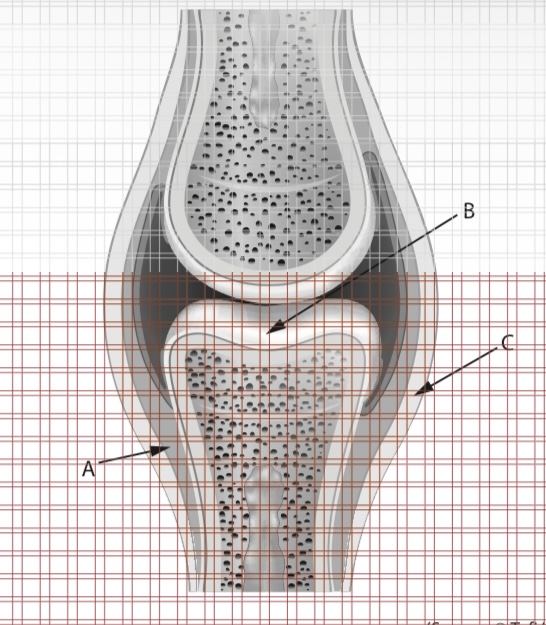Sports Unit 1
1/23
There's no tags or description
Looks like no tags are added yet.
Name | Mastery | Learn | Test | Matching | Spaced |
|---|
No study sessions yet.
24 Terms
What is the purpose of the skeletal system
To provide structure, protection and movement
What are the bone types and their function?
Long-Movement
Short-Shock absorption
Flat-Protection
Irregular-Support
What is an example of each bone type ?
Long-Femur, Humerus
Short-Carpals
Flat-Skull, Sternum
Irregular-Vertebrae, Pelvis
Joint types and examples
Fixed-Skull
Hinge-Knee ,elbow
Ball and socket-Shoulder ,hip
Pivot-Neck
Gliding-Wrist
What are the five main functions of the skeleton?
Support
protection
movement
mineral storage (e.g., calcium & phosphorus),
blood-cell production (in bone marrow).
Name the two major parts of the skeleton and give one example bone from each
Axial skeleton (e.g., vertebrae) and Appendicular skeleton (e.g., femur).
What is a synovial joint and name two movements that occur at it.
A freely-moveable joint with a synovial cavity, fluid
Movements: flexion/extension, abduction/adduction.
what are 2 examples of synovial joints?
ball and socket and hinge
What are the 3 main types of joint classification?
Fibrous (fixed)
Cartilaginous (slightly moveable)
Synovial (freely moveable).
What is the difference between the axial and appendicular skeleton in terms of function?
The axial skeleton supports and protects the central nervous system and vital organs whereas the appendicular skeleton enables movement and supports limbs.
what does leverage mean in the skeletal system?
Bones act as levers and joints act as fulcrums and the muscles apply force to move the bones, enabling movement of the body or limbs.
How does a hinge joint differ from a ball-and-socket joint?
A hinge joint allows movement in one plane like flexion/extension in the knee whereas a ball-and-socket joint allows a wide range of movement in many planes (e.g., shoulder/hip)
What are bones made from when you’re born?
mostly soft cartilage that slowly turns into hard bone.
What is the process called when cartilage turns into bone?
ossification
Where does bone growth in length happen?
At the growth plates (epiphyseal plates) near the ends of long bones.
what do osteoblasts do?
they build new bone tissue to the outside of the bones.
how does exercises affect bone growth
Weight-bearing exercise (like running, makes bones denser and stronger.
what is the name of the top of the vertebrae and how many bones does it have?
cervical - 7 bones
what is the name of the middle of the vertebrae and how many bones does it have?
thorarcic - 12 bones
what is the name of the lower middle of the vertebrae and how many bones does it have?
lumbar - 5 bones
what is the name of the bottom of the vertebrae and how many bones does it have?
sacrum - 5 bones
what is the name of the very end of the vertebrae and how many bones does it have?
coccyx - 4 bones

2 types of posterior deviations
scoliosis - move ment of spine right/left
kyphosis - outwards curve of the thoracic part of the spine.